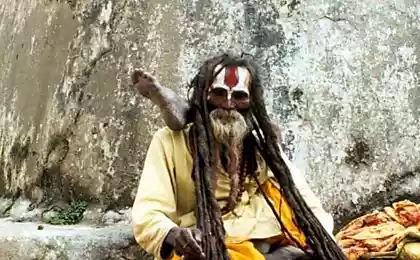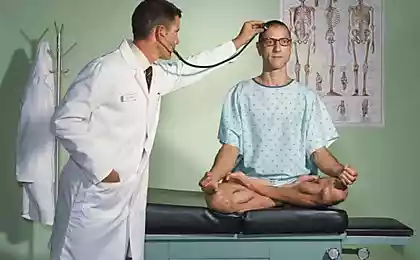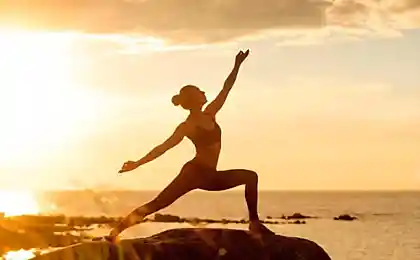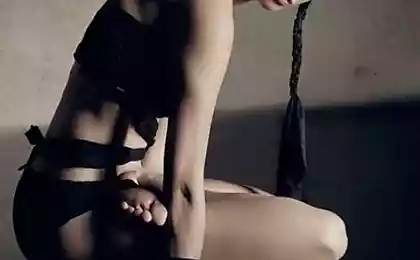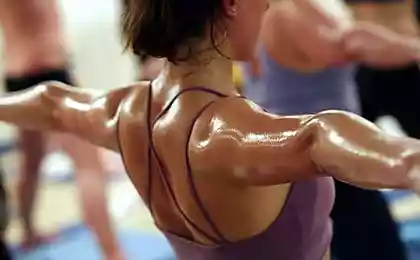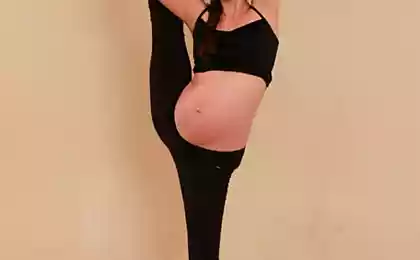887
Interesting facts about the origin and history of yoga
Yoga is an ancient system of exercise and meditation rooted in the distant past. It
changed over several millennia and gave a modern look only in the last
century. We offer you a selection of fascinating facts from the history of yoga
1. The birthplace of yoga — India
.

No one knows exactly when yoga first began to practice. According to one theory, our ancestors
back in the stone age could in this way try to bring harmony into your life. However, no conclusive proof of this. The earliest evidence of yoga is dated
third Millennium BC — in the valleys of the Indus river in India found many stone figurines, depicting human beings in meditative postures. Perhaps it was not the yoga that we know, but its forerunner.
2. Basics of yoga mentioned in the Vedas

A great influence on the development of yoga in the Vedas have had a number of spiritual texts written 2,500 years ago,
the opinion of believers, deities. The doctrine formed the basis of Hinduism and played a large role in the development of culture and philosophy of South Asia. The Vedas also contain some of the earliest teachings of yoga. Similarities
with current practice in them a little, but the basic principles of yoga laid there — for example, the ideals of physical and spiritual harmony.
3. The first mention of the term "yoga" is dated 4th century BC
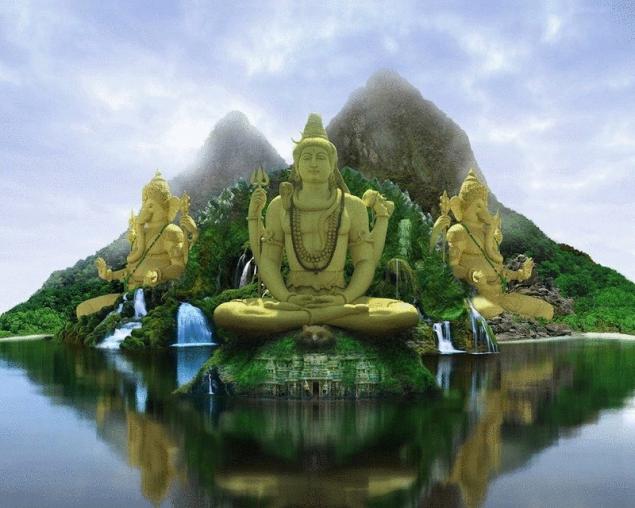
The term "yoga" was first mentioned in the katha-Upanishads — Hindu philosophical text, written around the fourth century BC and There yoga is understood as a technique of purification of mind and control over his senses for spiritual enlightenment. Later the Upanishads extend the concept of yoga and include
it techniques such as meditation, mental control and breathing. Also in the upaniṣads referred to the fundamental concepts of yoga, for example, chakras and meditation, using sacred Sanskrit syllable "Om", typical of the prayers and rituals.
4. Yoga had a practical application in life
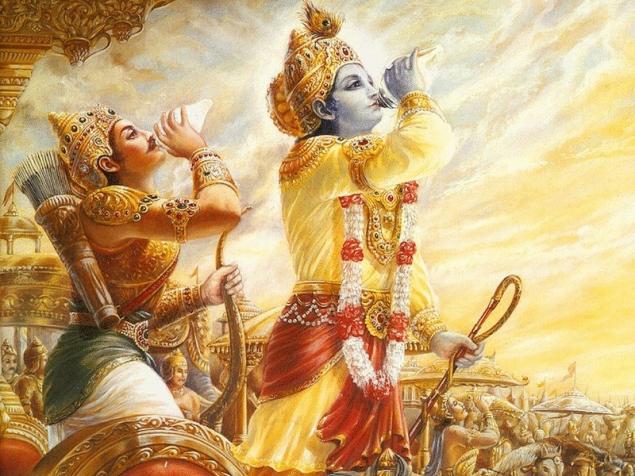
The Bhagavad-Gita, the ancient Hindu spiritual text talks about the practical techniques of yoga and its significance
for those who want to lead a full and harmonious life. In the Bhagavad-Gita describes the three areas: karma-yoga — the philosophy of selfless action, bhakti-yoga is a General belief in the divine, as opposed to mechanical performance of rituals, and the Jnana-yoga of selfless spiritual development on the difficult path of unity with reality.
Evolving for centuries, yoga was divided into many different practices and philosophies. Approximately in the second century CE a treatise Yoga Sutras a collection of aphorisms that succinctly and concisely stating the subject of yoga. In contrast to early concepts of the harmony of body and soul in Sutra it is said that the spiritual and physical start to divide, to purify the soul.
5. Yoga is primarily a spiritual practice

Throughout its history yoga has been and remains first and foremost a spiritual practice. Of course,
it includes some methods of physical impact postures for meditation and correct breathing techniques, but for the most part it is still a metaphysical practice.
6. Yoga acquired its modern appearance only in the middle Ages
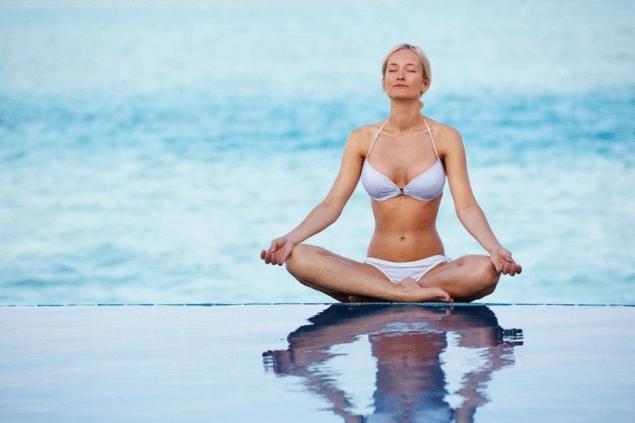
In the middle ages originated Hatha yoga, and it is the most close to the modern yoga. Practicing
Hatha yoga took into account the philosophy of the past centuries, but pay more attention to the cleansing of the body and not the spirit. Hatha has increased the variety of traditional seated yoga poses, and it also
first appeared a few different poses, or asanas, to the whole body.
7. In Europe yoga appeared in the 19th century

The next and last important milestone in the history of yoga was her insight into the culture of the West in the 19th century. Mostly, it made Hindu teacher named Swami Vivekananda while traveling on
Europe and the United States. Gradually in the West, yoga is primarily a system of exercises, not spiritual practice. Modern yoga is a meeting point of East and West and ancient and modern philosophies, using the strengths of both.
источник:publy.ru
Source: /users/1077
changed over several millennia and gave a modern look only in the last
century. We offer you a selection of fascinating facts from the history of yoga
1. The birthplace of yoga — India
.

No one knows exactly when yoga first began to practice. According to one theory, our ancestors
back in the stone age could in this way try to bring harmony into your life. However, no conclusive proof of this. The earliest evidence of yoga is dated
third Millennium BC — in the valleys of the Indus river in India found many stone figurines, depicting human beings in meditative postures. Perhaps it was not the yoga that we know, but its forerunner.
2. Basics of yoga mentioned in the Vedas

A great influence on the development of yoga in the Vedas have had a number of spiritual texts written 2,500 years ago,
the opinion of believers, deities. The doctrine formed the basis of Hinduism and played a large role in the development of culture and philosophy of South Asia. The Vedas also contain some of the earliest teachings of yoga. Similarities
with current practice in them a little, but the basic principles of yoga laid there — for example, the ideals of physical and spiritual harmony.
3. The first mention of the term "yoga" is dated 4th century BC

The term "yoga" was first mentioned in the katha-Upanishads — Hindu philosophical text, written around the fourth century BC and There yoga is understood as a technique of purification of mind and control over his senses for spiritual enlightenment. Later the Upanishads extend the concept of yoga and include
it techniques such as meditation, mental control and breathing. Also in the upaniṣads referred to the fundamental concepts of yoga, for example, chakras and meditation, using sacred Sanskrit syllable "Om", typical of the prayers and rituals.
4. Yoga had a practical application in life

The Bhagavad-Gita, the ancient Hindu spiritual text talks about the practical techniques of yoga and its significance
for those who want to lead a full and harmonious life. In the Bhagavad-Gita describes the three areas: karma-yoga — the philosophy of selfless action, bhakti-yoga is a General belief in the divine, as opposed to mechanical performance of rituals, and the Jnana-yoga of selfless spiritual development on the difficult path of unity with reality.
Evolving for centuries, yoga was divided into many different practices and philosophies. Approximately in the second century CE a treatise Yoga Sutras a collection of aphorisms that succinctly and concisely stating the subject of yoga. In contrast to early concepts of the harmony of body and soul in Sutra it is said that the spiritual and physical start to divide, to purify the soul.
5. Yoga is primarily a spiritual practice

Throughout its history yoga has been and remains first and foremost a spiritual practice. Of course,
it includes some methods of physical impact postures for meditation and correct breathing techniques, but for the most part it is still a metaphysical practice.
6. Yoga acquired its modern appearance only in the middle Ages

In the middle ages originated Hatha yoga, and it is the most close to the modern yoga. Practicing
Hatha yoga took into account the philosophy of the past centuries, but pay more attention to the cleansing of the body and not the spirit. Hatha has increased the variety of traditional seated yoga poses, and it also
first appeared a few different poses, or asanas, to the whole body.
7. In Europe yoga appeared in the 19th century

The next and last important milestone in the history of yoga was her insight into the culture of the West in the 19th century. Mostly, it made Hindu teacher named Swami Vivekananda while traveling on
Europe and the United States. Gradually in the West, yoga is primarily a system of exercises, not spiritual practice. Modern yoga is a meeting point of East and West and ancient and modern philosophies, using the strengths of both.
источник:publy.ru
Source: /users/1077

